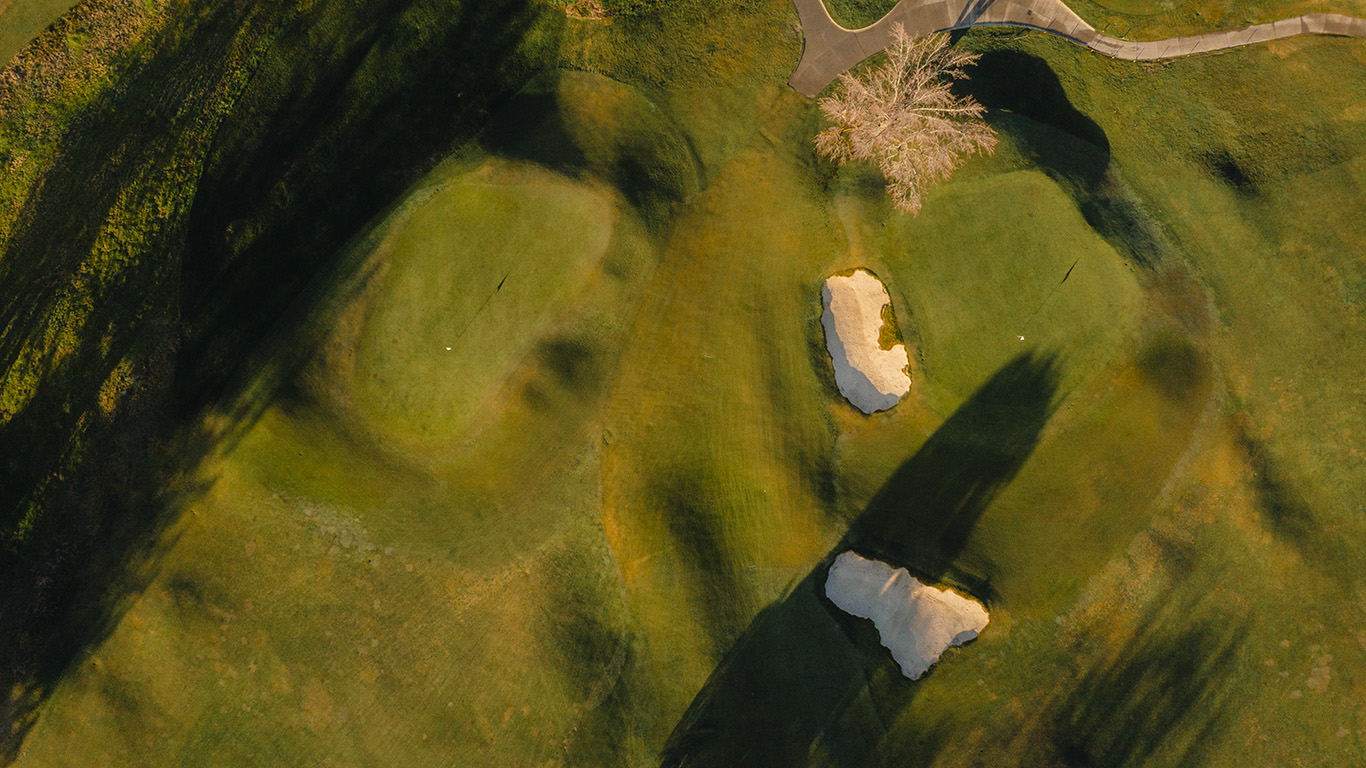Drainage can be dull to talk about, but it is critical to good golf course design. If a feature on a hole is wet and soft all the time, it won’t function as it should. Few courses demonstrate the benefits of clever drainage design more clearly than Orinda Country Club.
Orinda rarely comes up in discussions of the top courses in the Bay Area, overshadowed by the likes of San Francisco Golf Club, Cal Club, Meadow Club, Olympic Club, and Harding Park. But what really sets Bay Area golf apart is its wealth of under-the-radar clubs. Examples include Claremont, Green Hills, Diablo, and especially Orinda Country Club, a 1924 William Watson design outside of Oakland, California. Orinda was renovated in 2015 by Todd Eckenrode and a talented construction team that included superintendent Joshua C.F. Smith and shapers Brett Hochstein and George Waters.
Winding through the hills above the East Bay, Orinda packs a great deal of variety and thought-provoking holes into a small, severe property. The dramatic topography helped make the course memorable but also presented logistical problems. Orinda sits in a mountain valley that likes to collect rain, and the heavy, clayey soils don’t absorb water very well. This could have been a recipe for drainage disaster, especially in the 1920s, when intricate drainage systems were not yet commonplace. So Watson basically had one option: surface drainage. He had to find ways to use land and gravity to divert water away from the playing surfaces, and he did a brilliant job of it.
A perfect example can be found at a low point of the property, where the greens for Nos. 3 and 12 both sit. These are two of the best, most striking holes at Orinda. No. 3 is a long par 3 that cascades down a ridge, and No. 12 is a long par 4 that plays over a rise and runs down to an incredibly bold green. Both holes demand mid- to long-iron shots from most players, so they work best when the turf leading into the greens is firm and allows for running approaches.
This is where Watson’s skill comes in. The third and 12th greens are located near the base of the hill, so they are vulnerable to flooding. Watson had to figure out how to keep the greens and their surrounds dry, and he did so by building an intricate array of drainage cuts. These features are, above all, functional, moving water around the green complexes instead of letting it wash over them.
But the cuts also provide strategic interest. They impinge on desirable landing areas and deflect balls away from targets much as they funnel water away from playing surfaces. In this way, the drainage elements on Nos. 3 and 12 are like well-placed bunkers: play as close to them as you dare.
-

The third (foreground) and 12th (background) greens at Orinda Country Club. Photo: Cameron Hurdus
-

The 12th green at Orinda Country Club. Photo: Cameron Hurdus
-

The third green at Orinda Country Club. Photo: Cameron Hurdus
-

The 12th (left) and third (right) greens at Orinda Country Club. Photo: Cameron Hurdus
Yes, this is more or less how catch basins work, and I have frequently decried modern architecture’s over-reliance on catch basins as drainage components. But the big difference with Watson’s cuts is that they are more gentle, blending inconspicuously into the landscape. They are long, graceful shapes that feel like part of the hole rather than sudden notches in the terrain that look and play like sinks. Also, instead of simply feeding into a drain as most catch basins do, Watson’s features make their way gradually to natural low-lying areas and often, from there, speed off toward creeks.
Orinda isn’t the only Watson course where these kinds of drainage tactics are on display. One of his best courses, Belvedere Golf Club in Charlevoix, Michigan, has similar features.
On the 11th hole, for instance, the green site presents a number of potential drainage difficulties. Behind the green is a small hill, and in front of it is a ridge descending from right to left. Rainfall could easily move off of both of these landforms and onto the putting surface. But Watson’s green contours play defense, directing water to the surrounds and then to slopes that run off the front of the green and to the left. In addition, these contours, like the cuts at Orinda, have a strategic role: they repel poor approaches in a variety of directions, putting a premium on accurate iron play.
-

The approach to the 11th green at Belvedere Golf Club. Photo: Andy Johnson
-

From the 11th fairway at Belvedere Golf Club. Photo: Andy Johnson
-

Short left of the 11th green at Belvedere Golf Club. Photo: Andy Johnson
-

Above the 11th green at Belvedere Golf Club. Photo: Andy Johnson
-

Behind the 11th green at Belvedere Golf Club. Photo: Andy Johnson
-

The 11th hole at Belvedere Golf Club. Photo: Andy Johnson
Thoughtful drainage solutions like these were a specialty of Golden Age architects, who didn’t have the advantages of high-tech drainage and agronomy. These limitations, as limitations often do, bred creativity and resulted in subtle, intriguing design. So William Watson may have been born 100 years too early to know anything about SubAir and Billy Bunkers, but he still has a lot to teach today’s architects.


 by
by 
